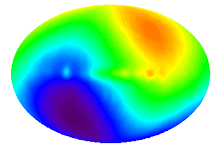Defibrillation Plus CPR: A Critical Combination
the most frequent initial rhythm in
out-of-hospital witnessed SCA is ventricular fibrillation (VF),
the treatment for
ventricular fibrillation is defibrillation,
and VF tends to
deteriorate to asystole over time.
For every minute that
passes between collapse and defibrillation, survival rates from witnessed VF
SCA decrease 7% to 10% if no CPR is provided.
When bystander CPR is
provided, the decrease in survival rates is more gradual and averages 3% to 4%
per minute from collapse to defibrillation.
CPR can double or triple survival from
witnessed SCA at most intervals to defibrillation.
If bystanders provide
immediate CPR, many adults in VF can survive with intact neurologic function,
especially if defibrillation is performed within 5 to 10 minutes after SCA.
defibrillation (shock success) is typically defined as
termination of VF for at least 5 seconds following the shock.
VF frequently recurs
after successful shocks, but this recurrence should not be equated with shock
failure.
Shock success using the
typical definition of defibrillation should not be confused with
resuscitation outcomes such as restoration of a perfusing rhythm (ROSC),
survival to hospital admission, or survival to hospital discharge.

沒有留言:
張貼留言